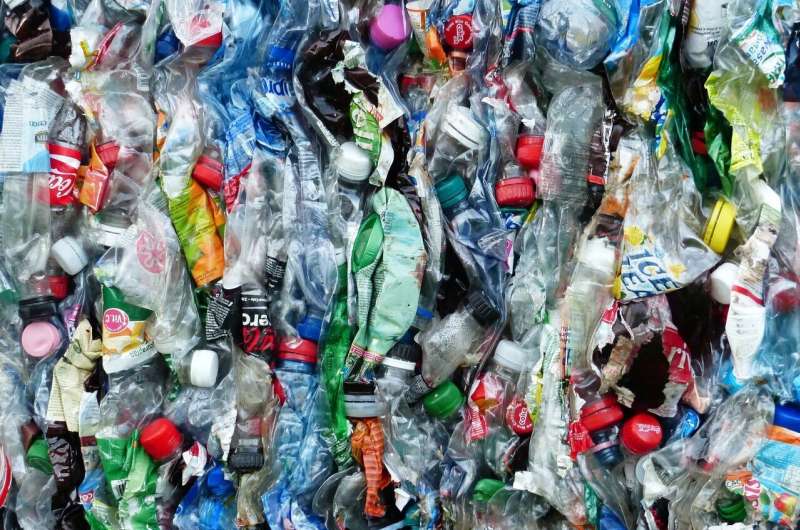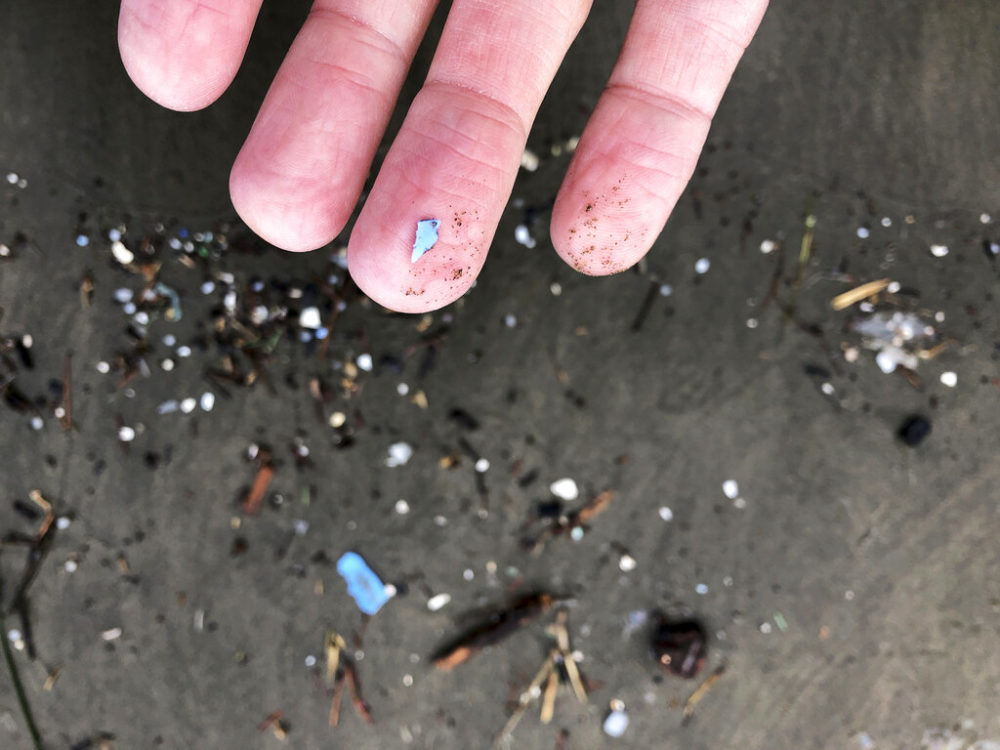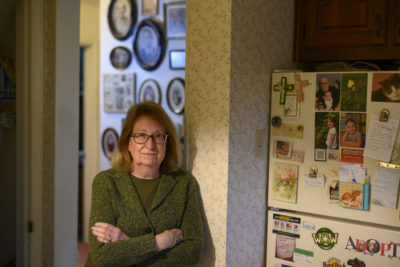Water bottles. Shopping bags. Computers. Medical equipment. Food containers. And on and on and on.Plastics. They never go away. And even if we can’t see them — they’re everywhere.“They are carried in the atmosphere, they are raining down on us. They’ve been found in the Himalayan mountains,” Erica Cirino says. “So right now we are immersed in a microplastics and nanoplastics soup.”But are those microplastics inside of us?“About five years ago was when scientists first began questioning, Are there plastics inside our bodies? And indeed there are,” Cirino adds.For the first time, microplastics have been found in living humans — their lungs and blood.“I don’t like it at all that plastic waste is in the river of life. One thing is clear that we are exposed,” Heather Leslie says. “Do they actually cause adverse health outcomes? That’s a question that takes many years to answer.”Today, On Point: Microplastics and your health.GuestsErica Cirino, communications manager at the Plastic Pollution Coalition. Author of Thicker Than Water: The Quest for Solutions to the Plastic Crisis. (@erica_cirino)Heather Leslie, she established the microplastics lab at the Free University of Amsterdam. Lead author of a new study which found microplastics and nanoplastics in human blood.Also FeaturedMary Kosuth, researcher at the University of Minnesota’s School of Public Health.Book ExcerptExcerpt from Thicker Than Water: The Quest for Solutions to the Plastic Crisis By Erica Cirino. Copyright © 2021, Published by Island Press. All rights reserved.Transcript: Microplastics, The Bloodstream and Your HealthMEGHNA CHAKRABARTI: Joining us now from Amsterdam in the Netherlands is Heather Leslie. She established the Microplastics Lab at the Free University of Amsterdam. Heather, welcome to the program.HEATHER LESLIE: Thank you very much.CHAKRABARTI: So you and your team have also found evidence of micro and nanoplastics in living human bodies. Where did you find them?LESLIE: Yes, we looked in the human bloodstream and we found out that micro and nanoplastics are actually very close to our hearts. We expected that plastics would be circulating in our bodies, but now we know they are. We have the first evidence for that.CHAKRABARTI: How did you find it?LESLIE: It took a lot of trial and error to develop a method that’s sensitive enough. And of course, just like your studio, our lab has a lot of plastic in it. And we have to be extremely careful about the quality control of the analysis. I think this was the most difficult analysis I’ve ever tried in my entire career. And so it took us a long time to get our analysis sensitive enough. And to make sure we weren’t introducing any background contamination from our lab or from all the stuff that we use in order to do the analysis.CHAKRABARTI: Heather, in the reading and thinking that we’ve been doing about this hour, I have to admit it didn’t even occur to me the high chance of cross-contamination because of the ubiquity of plastics, even just in scientific laboratory equipment. Wow. OK, but you overcame that challenge and were able to come up with some kind of assay that detected these micro and nanoplastics in blood samples. Where did you get the samples from? Obviously, we don’t have to identify the individual people, but … where did they come from?LESLIE: Yeah. So we had 22 anonymous donors, that our university also has a university hospital. So I worked together with an immunologist and doctor there, and we were able to access these samples from there. It was a little bit difficult because we were doing that during the first lockdowns and the immunologists were working on COVID research and this had a little bit less priority at the time. But we managed to finish up our short one year pilot project, which had, of course, a lot of work done before that, before we were ready for the samples.But yeah, we were ready for the samples and we managed to do 22 people, which gives us a good indication of concentration ranges to expect and to see if we could find anything at all. Because really, you know, if you find something in the air or in the food chain, that tells you a lot about what we are encountering. But it doesn’t tell you what’s being absorbed in your body. And so by looking in the bloodstream, you’re actually doing that extra step to find out what is the absorbable fraction.CHAKRABARTI: OK, so we’re going to talk about what you actually found in the blood in a second here. But were the samples from adults or was there a range of ages?LESLIE: Oh yes, they were all adults over 18.CHAKRABARTI: Because we’re going to want to talk about the impact on children a little bit later. Or maybe the questions we should ask to understand what the potential impact on kids can be. OK, so what concentrations of micro and nanoplastics did you find in these blood samples?LESLIE: … Plastic is a whole range of different substances, let’s say. So we looked at, with our method, we weren’t looking at counting the particles like some other studies, but we were actually measuring the mass of each type of plastic individually. So we found things like PET, which you make water bottles out of. And polystyrene, a type of polymers and polyethylene and these kinds of plastics. And some people are just interested in the whole sum of all the plastics.So we also in our article, reported the sum. And when you add up all of the plastics that we find in one sample, we came to an average of 1.6 micrograms in a milliliter of blood. And that sounds like a very small amount. But if that blood sample is representative for the whole body, then we’re talking milligrams in a single human body just circulating in the bloodstream. At the time that we were sampling.CHAKRABARTI: I’m trying to think of what a visual equivalent of a of a milligram, would be like a quarter teaspoon or something. Maybe that’s still too much.LESLIE: Oh, it’s very, very, very small. … Plastic is very light, you know, it’s not a very heavy material. So a microgram, it’s like around a microgram in a milliliter of blood. A milliliter of blood, that’s well, I think there’s 15 milliliters in a teaspoon or something like that. So it’s a small amount of blood, but it’s also a very small amount of plastic in the blood.CHAKRABARTI: OK, so Erica Cirino, what’s your thoughts when you first heard about Heather and her team’s research, essentially confirming that there are, even if a small amount, discernibly different types of micro and nanoplastics circulating in living human bodies?ERICA CIRINO: Well, like most people, probably my first reaction was, oh, no. But I also know in the context of the research I did when writing my book Thicker Than Water, to tell the story of the plastic crisis that actually research showing plastics and plastic particles in our environment were published as early as the 1960s and 1970s. And recently, you know, this research has kind of accelerated and there’s been a push to look inside the human body.And finally, we’re getting there and research is evolving rapidly now. But there has been a long understanding, I think, in the scientific community that plastic exists all around us on Earth. But the ubiquity and the true understanding that we live in a time where actually we change the geological nature of our planet and are living in a plasticine of sorts is not surprising, to know that we are also becoming plastic.CHAKRABARTI: Well, so, Heather, I this actually links back to why finding it in the blood is particularly eye opening. Because blood is everywhere in the human body. It has, you know, as you’ve said before, it’s the river of life. Its purpose is transport, right? To transport nutrients, oxygen to every cell in the body, to transport waste away from those cells. So does this mean that essentially every part of the human body is being exposed? Even if it’s to a small amount being exposed to these micro and nanoplastics?LESLIE: Yes, this is why I really wanted to focus on blood and in the first place. There have been some studies about feces, and I was thinking, Well, that’s more of a problem for the sewage treatment plants, you know, and it’s going right through our bodies. But the blood, if it’s absorbed into the blood, as you said just now, the blood bathes all of our cells of our body, and it needs to do that on a very regular basis. And so anything that is in our bloodstream can reach our organs.And in toxicology, we’re interested in what gets close to what we call sites of toxic action. So if it’s outside your body, it’s not interacting with the biology. But when it’s inside your body and it gets close to some area of your body that’s doing its thing, that’s functioning as it normally does in nature, then you can have an opportunity to cause toxicity. If that particle knows how to cause toxicity. It needs to be close to that or close to that area where it can cause the damage. So that’s why it’s important to look at blood.CHAKRABARTI: OK, so because there we have basically an exposure pathway to every organ system, every system in the human body through blood. But you know, on the other hand, of course, everyone wants to know like, Oh my gosh, so what impact does this have on human health? And we don’t have the answers to those questions yet, right? Because the research is still very new in confirming the presence of plastics inside living bodies.But I am thinking, you know, in modern life we’re exposed to a lot of things every day. We breathe them in, we eat them in. And I’m not saying that they’re inert, but perhaps they are absorbed into our bodies at such low levels that it doesn’t actually cause some kind of deleterious effect on human health. Could that be possible, Heather?LESLIE: I always say we have to not really jump the gun and claim that it’s safe or it’s not safe. We should just say we don’t know until we collect enough evidence to make those kinds of claims. So it’s a very difficult situation to be in to say, I don’t know. Because everybody wants an answer. We do have half of the answer because a risk to human health is built up from the exposure, and from knowledge about which exposure level is sort of a threshold for the toxicity.So above a certain level, you can expect toxicity. Below a certain level, you don’t expect it. It’s like the very, very 500-year-old knowledge that the dose makes the poison. So the most important part to know is, Is there any poison there or potential poison? And we know that if the dose gets high enough, we probably will see effects, even if it’s table salt or even if you drink too much water.So there is a certain point where it will be toxic. So it’s very important to know what the dose is. And there’s a lot of research going on now, and I think one of the main areas to really look at is the immuno-toxicological side. So what effect does this have on our immune systems? And I think that’s a good place to really look.





